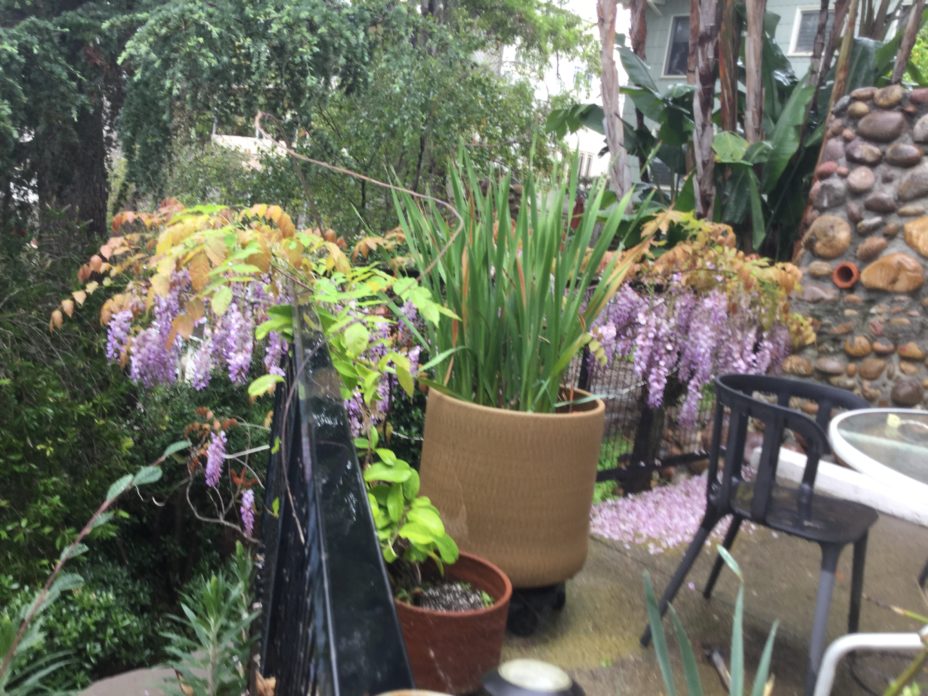Looking on the Bright Side
Because of COVID-19, the Mission Hills Garden Club will not be meeting until further notice. I shall continue writing about whatever strikes my fancy or seems reasonable, as always.
Today I want to talk about opportunities self-quarantine is giving us. We have heard about what to do to slow the course of the corona virus. However, less emphasis is put on how to survive it in self-isolation or in a society hampered by both the virus and the effects of self-isolation.
We don’t know how long we will be in this situation. Some say we need strictly observed isolation of everyone except those needed to provide essential services until the virus has noticeably slowed. Others have a more nuanced plan.
Dr. David L. Katz, the founding director of Yale University’s C.D.C.-funded Yale-Griffin Prevention Research Center and an expert in public health, believes the incarceration period should end after two weeks allowing low risk people who have showed no symptoms to resume normal activities while the high-risk group remains sequestered until the disease has abated altogether. This plan not only should allow the medical system to give expert treatment to those with severe medical issues, but it also would allow our economy a chance to begin recovering without taxing the medical system. In addition, it gives society hope: this crisis has a foreseeable end.
Who knows what the solution will be to this situation? No matter what we do, there will still be
risk; there is always risk. The question is, how do we stay sane while protecting ourselves and society?
During the Spanish Flu epidemic of 1918, people were not as lucky as we. They had no internet, no television, no video games to play on-line with their friends, no Skype, no Facetime, no Zoom, and no other means of enjoying virtual reality. We are lucky.
First, we live in San Diego. Our weather has been ideal. The rain is making our gardens thrive; the season is perfect for watching flowers bloom. Furthermore, this isolation gives us the gift of time. We have myriad ways of connecting and re-connecting with our families and old friends, ways to say, “I love you,” or “I miss you.” This is a time to reach out by phone, FaceTime, Skype, email, US mail to friends and family. Some people are holding virtual dinner parties. I’m not sure how one does this, but I did invite a friend from 65 years ago for coffee and a phone visit. She’ll be in her apartment on the East Side in New York, and I’ll be in my San Diego yard or in bed (if it’s early) but we’ll both have coffee made at our homes which we can drink as we chat.
I feel fortunate that I am not working from home with young children to be entertained. Society has provided — via television and the internet — free lessons, free crafts, virtual travels, virtual museum tours, nature walks and a host of other ways to help entertain active children and lonely adults. There are even play-lets for deprived theatre goers. Despite the societal horrors of disease and poverty, I am enjoying my isolation. My daughter and grandsons just dropped off a balloon attached to a package of candy with a note saying they love us and miss us. While I have been receiving groceries ordered online and delivered, some at no charge, my daughter and grandsons have dropped off supplies when we needed food (vegetables) in a hurry.
Baskin Robbins delivers; I got three quarts of ice cream less than 30 minutes after ordering it. Sadly, my husband and I are eating much more than we need.
It is wise to have a regular schedule, even if you are neither working nor dealing with children or caregiving. This means getting up and dressed each day. What you wear is up to you. I think pajamas are a very nice outfit; bathing, combing your hair and brushing your teeth promote health; but no one says you need to shave or wear makeup. Then you plan your activities. They may include a nap if you are able to sleep at night as well. You are in charge of what you do and when you do it. According to my husband, a group organized a plan to read a difficult book. Every day they read 12 pages of “War and Peace” by a certain time. Then they have a conference call to discuss the twelve pages. They are armed to finish the book. This time they might really do it.
The drawback to my enjoyment of incarceration is guilt. This is also a perfect time to shorten the lengthy “to do” list (or “honey do” list if you have a spouse with ways to spend your time). To motivate myself to sort items to give away; to repair the drip system; to weed my beautiful now weed-infested yard; to clean closets, refrigerators, drawers, and to mend and iron clothing; I have a reward system. If I complete or make major headway on a single project, I am free to read a book or to watch programs and movies I’ve missed. Netflix is offering free movies. I can watch dressage on YouTube; exercise on my gym equipment (Is eating a reasonable reward for doing that?); chat with friends; make bread; even make a quilt (using clothing I don’t wear any more) if I want to.
I feel very fortunate, despite everything. Next month I will share my staghorn fern adventure with you. Please keep your fingers crossed that it survives that long.

Category: Entertainment, Gardening, Life Style, Local News







